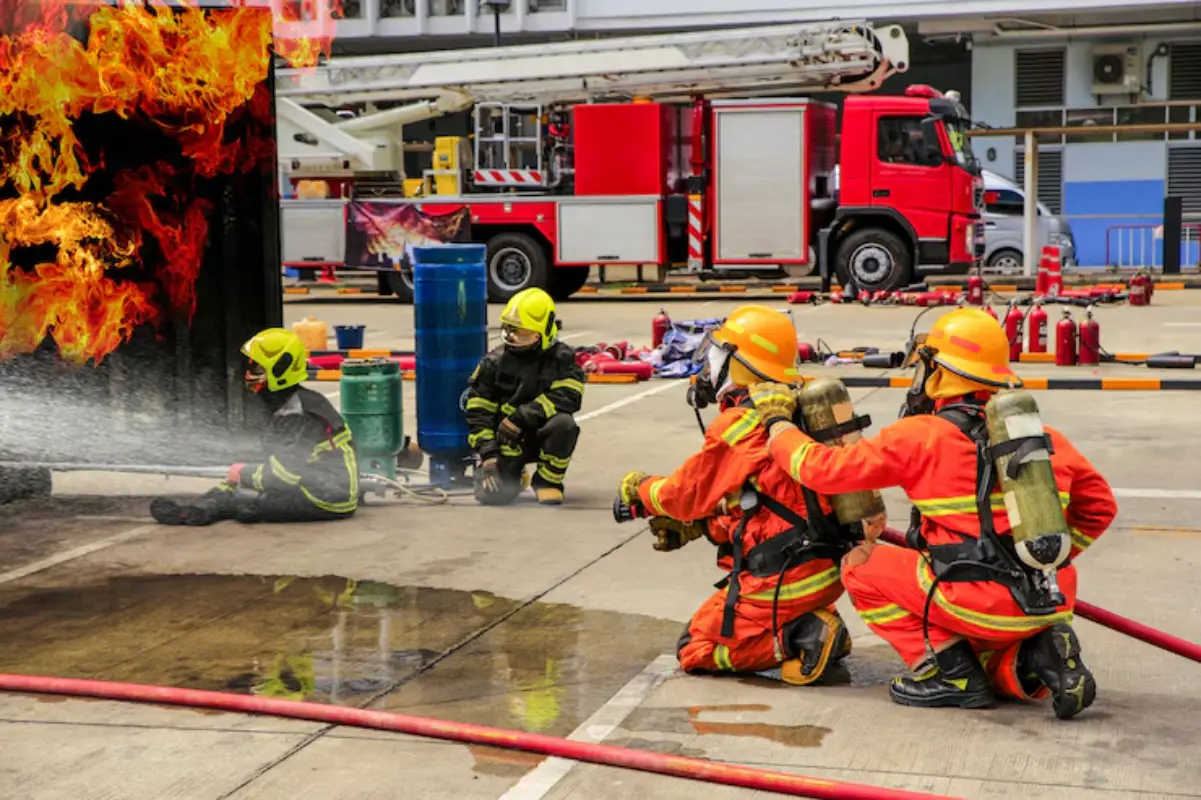Starting a firefighter or EMT career means embracing a unique blend of physical, intellectual, and emotional challenges. Training programs are built to introduce students to the fast-paced world of emergency services, presenting a curriculum designed to foster split-second decision-making and high-stress problem-solving. Whether in a classroom, simulation lab, or during actual fieldwork, trainees quickly realize the gravity of the responsibilities ahead of them. The experience is transformative, often pushing personal limits and uncovering strengths previously unknown.
Flexibility and accessibility are priorities for many who want to enter these fields, and the rise of technology-driven education has opened new doors. Aspiring EMTs can enroll in online EMT courses offering interactive learning modules, independent study options, and periodic hands-on assessments. These courses benefit students who must balance education with family or work commitments. While core skills and knowledge remain consistent, online components allow nontraditional learners to thrive.
The need for better access and ongoing content development is a focus recognized by experts in the firefighting and EMS community. As the National Fire Protection Association reports, emerging threats—from wildfires intensified by climate change to complex urban emergencies—mean that programs must continually adjust. This ensures that graduates are prepared for classic fireground scenarios and ready to tackle the diverse incidents confronting today’s responders.
Contents
Key Skills Developed During Training
The breadth of skills gained during fire and EMT training is remarkable. Trainees learn fire suppression through traditional tactics, such as hose handling, ladder raises, and ventilation, and modern techniques that address new building materials and layouts—incident command procedures, rapid intervention strategies, and dangerous material identification round out the fire side. EMT coursework is equally demanding, with trainees mastering everything from initial patient assessment and airway management to bleeding control and safe transport procedures.
Beyond technical skills, the importance of “soft” skills is highlighted throughout—communication, leadership, and cultural sensitivity frequently surface in training modules and daily interaction. Fire and EMS teams thrive on cooperation and trust, making group drills and role plays essential. These scenarios may include managing panicked crowds, delivering bad news with empathy, or navigating language barriers, even before arriving at the scene. Graduates of these programs often remark that their personal development is as significant as their technical growth, with newfound resilience and a deep sense of responsibility cultivated from the first day.
Classroom vs. Hands-On Experience
No amount of reading or lecture can fully replace the value of physical, on-site practice. Classroom lessons still play a critical role, laying the foundation for everything. Students pore over materials such as building construction, emergency medical procedures, fire science, and hazardous materials response. As they move to hands-on training, these concepts become a physical reality. Trainees might feel the heat of a controlled burn, carry heavy rescue dummies up stairwells, or perform simulated emergency intubations on realistic mannequins. The balance between theory and practical skill is meticulously maintained in top programs.
The necessity of this hybrid approach is underscored by the U.S. Fire Administration, which reveals that trainees who experience both academic and practical instruction are more confident and retain information longer. Many academies now require students to complete field internships, helping integrate classroom learning with the unpredictable conditions encountered during real emergency calls. This “learning by doing” approach ensures that, by the time trainees graduate, their reactions are instinctual, crucial when seconds matter most.
Certification Requirements
Gaining certification is a multi-step process that serves as more than a milestone; it is a testament to an individual’s readiness and ethical commitment. Requirements vary, but most candidates must pass written exams covering firefighting methods, emergency protocols, anatomy, and field operations. Practical testing may include executing rescues, navigating obstacle courses in full gear, or administering advanced life support on a patient simulator. Simulation-based evaluators often create scenarios that mirror the complexities and unpredictability of real-world calls, challenging candidates to think quickly and adapt.
Additional checkpoints, like background checks and medical clearances, add extra layers of safety for communities and responders alike. These steps ensure trainees can handle the physical and emotional rigors of service. Certification also introduces professionals to a code of conduct that guides them for the length of their careers, emphasizing values like accountability, respect, and public stewardship—ideals that are central to building community trust.
Why Continuing Education Matters
The fire and EMS world never stands still. New research, equipment, and techniques emerge regularly, demanding constant learning. Whether state-mandated or voluntarily pursued, continuing education programs allow professionals to maintain and expand their skills over time. Updates might address everything from rapidly evolving medical technologies and firefighting equipment to revised protocols for pandemic response or mass casualty incidents.
Many departments now incorporate annual competency checks or targeted workshops to address new threats, like lithium battery fires or large-scale natural disasters. This keeps responders sharp and allows departments to evolve alongside risks to public safety. Lifelong learning means better protection for families, property, and responders, creating a knowledge cycle that benefits everyone.
Challenges Faced in Training Programs
Firefighting and EMT training programs are renowned for their difficulty, designed intentionally to weed out complacency and ensure only the most committed succeed. Grueling physical fitness regimens—sprints, stair climbs with gear, heavy lifting—test muscular and cardiovascular strength. Emotional fortitude is equally necessary, as trainees are exposed to trauma simulations, critical incident debriefings, and high-pressure teamwork exercises that mirror real emergencies. Balancing work, study, and family can amplify these challenges, making time management and self-care as important as technical skills.
Facing these obstacles is never a solo effort. Strong peer support, attentive instructors, and a culture of mentorship can make all the difference. Many graduates reflect that while the journey was challenging, the friendships, discipline, and perseverance they gained prepared them for the lifelong demands of emergency services in ways few other paths could.
Career Paths After Certification
- Municipal Firefighter
- Industrial Fire Brigade Member
- Wildland Firefighter
- EMT or Paramedic (with additional credentials)
- Public Safety Instructor
- Disaster Response Team Specialist
Certification opens many doors, allowing professionals to work in city departments, private enterprises, rural agencies, and even national parks. Some specialize in hazardous materials, technical rescue, or public health outreach. Others transition into instructor roles, embracing the chance to mentor incoming students and contribute their knowledge to the next generation of responders. Firefighters and EMTs can even find opportunities overseas, particularly in disaster relief or international development.
The wide array of career options allows individuals to find roles best suited to their physical strengths, personal interests, and long-term goals, making this a versatile profession that evolves alongside its practitioners.
Real-Life Examples of Heroism and Teamwork
Stories of heroism in fire and EMS careers are plentiful, ranging from daring rescues in burning buildings to high-speed lifesaving interventions at traffic accidents. While these moments make headlines and inspire communities, they are always the product of rigorous preparation and teamwork. Responders never step onto a scene alone; months and years of group drills pay off in the seamless, coordinated efforts that bring about the best possible outcomes.
Regular features in local and national media spotlight these acts not for their drama, but for the discipline and compassion at their core. For example, coordinated responses to natural disasters or mass casualty incidents highlight the technical skills and the emotional stamina needed in the field. Together, these stories remind us that while emergencies may test the limits of human capability, service excellence can be achieved—and lives changed for the better—when professionals work together, driven by a sense of duty and the training that initiated it all.



